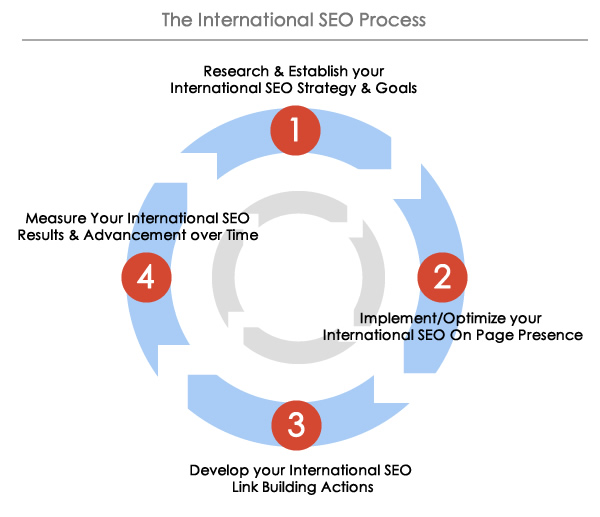Go Global with Self-confidence: International SEO Best Practices
Go Global with Self-confidence: International SEO Best Practices
Blog Article
Browsing the Digital Landscape: Leveraging International Search Engine Optimization for Cross-Border Success
In today's interconnected electronic world, organizations are significantly looking past boundaries to touch right into international markets. The complexity of navigating the digital landscape on an international range demands a nuanced technique, from recognizing the fundamentals of International Search engine optimization to applying geotargeting and multilingual key words methods.
Understanding International SEO Fundamentals
Browsing the ins and outs of worldwide search engine optimization calls for a solid grasp of fundamental concepts to effectively increase on the internet exposure across borders. One critical facet of global SEO is understanding the relevance of localization. This involves tailoring site material to match the etymological, cultural, and industrial distinctions of target markets. Search phrases should be not just equated but additionally adapted to reflect how users in different areas look for information.
Furthermore, having a clear understanding of geo-targeting is essential. This involves suggesting to internet search engine the particular nations or areas a website is targeting. Carrying out hreflang tags is one means to interact this details, making sure that the correct variation of a webpage shows up in the search results for an individual in a particular area.
Furthermore, understanding the influence of neighborhood search engines and social media sites platforms is essential for global search engine optimization success. For instance, while Google is dominant in several regions, nations like China have their own online search engine like Baidu, needing customized approaches for each system to make best use of on the internet presence.

Targeting Multilingual Key Phrase Techniques
Creating multilingual keyword phrase strategies is necessary for properly reaching varied worldwide target markets and maximizing on the internet visibility throughout various etymological areas. When targeting multilingual key words strategies, it is important to conduct thorough study to recognize the specific search terms and phrases used by the target audience in each linguistic area. This entails not only equating key words however additionally considering cultural subtleties, regional languages, and search trends one-of-a-kind per target market.
To produce a successful multilingual search phrase method, it is necessary to focus on importance and search intent. Keywords must line up with the material on the web site and reverberate with the cultural context of the target market. Using devices such as Google Key Phrase Planner, SEMrush, or Ahrefs can assist identify high-performing keyword phrases in various languages and examine their search volume and competitors level.
Furthermore, tracking and examining the performance of multilingual search phrases regularly is necessary for optimizing and improving the approach over time. By constantly adapting to changes in search habits and trends, organizations can boost their on-line visibility and draw in more international traffic to their internet sites.
Executing Geotargeting and Hreflang Tags
When aiming to boost global SEO approaches, including geotargeting and hreflang tags is essential for maximizing website presence across different regions. Geotargeting includes tailoring content to specific locations, guaranteeing that individuals in various areas get relevant details. By implementing geotargeting, organizations can improve their local search positions and draw in region-specific traffic.

Optimizing Web Site Structure for Worldwide Exposure
To even more boost worldwide search engine optimization techniques past geotargeting and hreflang tags, optimizing the internet site framework is critical for attaining global presence and making the most of reach across different areas. A well-structured website not just enhances customer experience yet likewise assists in online search engine crawlers in comprehending the content and context of the website. When going for worldwide visibility, it is vital to ensure that the site is arranged in a sensible fashion that provides to users from different nations. Applying a clear power structure with distinct categories and subcategories can assist in boosting the site's navigating and user-friendliness.
Additionally, creating language-specific subdirectories or subdomains can assist online search engine provide the right version of the website their website to users based on their language preferences, better boosting the total customer experience. In addition, optimizing URL frameworks to include appropriate key words and geotargeted terms can enhance the website's presence in different regions. By structuring the site properly for international audiences, companies can raise their opportunities of bring in worldwide traffic and broadening their reach throughout boundaries.

Tracking and Assessing Cross-Border Performance
Reliable surveillance and analyzing of cross-border efficiency is vital for examining the success of international search engine optimization approaches and determining chances for renovation in global reach and visibility. By closely tracking key performance signs (KPIs) across different markets, organizations can acquire valuable insights right into the performance of their cross-border SEO efforts. Checking metrics such as natural traffic, keyword positions, conversion prices, and bounce prices can provide a comprehensive view of exactly how well a website is executing in numerous regions.
Evaluating cross-border efficiency information enables businesses to determine trends, patterns, and areas for optimization. By comparing performance throughout various nations, regions, or languages, business can identify successful techniques and localize web content to much better satisfy particular target audiences. Furthermore, keeping track of cross-border performance allows services to stay dexterous and responsive in the ever-evolving electronic landscape. Regular analysis of SEO performance on an international range ensures that companies can adapt their techniques promptly to capitalize on arising possibilities and maintain a competitive edge in worldwide markets.
Conclusion
To conclude, international search my response engine optimization plays a vital duty in attaining cross-border success by maximizing sites for worldwide exposure, targeting multilingual key phrase approaches, executing geotargeting and hreflang tags, and keeping an eye on cross-border efficiency. By recognizing the principles of international search engine optimization and optimizing site structures as necessary, services can effectively reach and involve with their target market across different areas and languages. This calculated strategy is necessary for expanding market reach and driving on the internet growth in today's electronic landscape.
Report this page